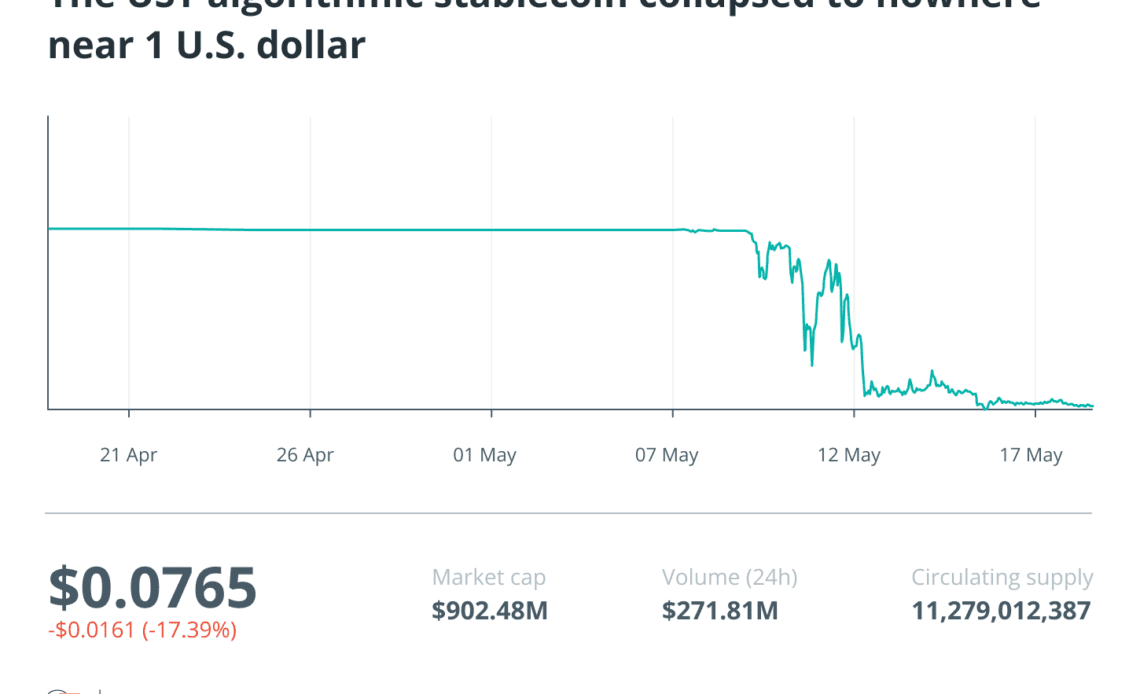Stablecoins were supposed to be the boring uncle of the crypto world — safe, sensible and dull. They’re probably not what Satoshi Nakamoto had in mind, but they’re supposed to be a reassuring haven of calm and utility away from the turbulence of pure-play cryptocurrencies.
With values pegged to fiat currencies, stablecoins were intended to be useful rather than to offer get-rich-quick schemes. They play an important role in the cryptocurrency ecosystem by providing a safer place to store capital without having to cash out entirely, and allowing assets to be denominated in fiat currencies rather than volatile tokens.
However, events in May demonstrated that crypto stability is still elusive. With governments slow to react, Terra’s LUNA token — which has since been renamed Luna Classic (LUNC) — dropped to close to zero in value, wiping out $60 billion along the way. The obvious conclusion would be that the stablecoin experiment has failed. But I believe Terra’s fall to Earth is the precursor to a new era where stablecoins will become established, accepted and beneficial components of the global economic system. And the regulation that is only now dropping into place already looks well past its sell-by date.
Not all stablecoins were born equal
If that seems unlikely right now, the failure of a few stablecoins does not write off the entire concept. Other stablecoins have been constructed on solid ground and are performing as expected.
What’s happening is a clearout of the algorithmic stablecoins. These are coins that were never fit for purpose because they were built on insecure foundations. There were always critics: Some called out Terra as a Ponzi scheme and argued that it, and other algorithmics, would only hold value if more and more people bought them.
Algorithmic stablecoins are unregulated and not backed by equivalent amounts of the underlying fiat currency — or by anything, for that matter. Instead, they deploy smart contracts to create or destroy the available supply of tokens to adjust the price. It’s a system that worked, backed up by an artificially high interest-paying mechanism called Anchor, while enough people believed in it. Once that trust started to evaporate in early May, the flood gates opened in a classic, old-world bank run.
Related: What can other algorithmic stablecoins learn from Terra’s crash?
But there are other classes of stablecoin that are backed by assets, including fiat currencies. Tether (USDT), the…
Click Here to Read the Full Original Article at Cointelegraph.com News…
























